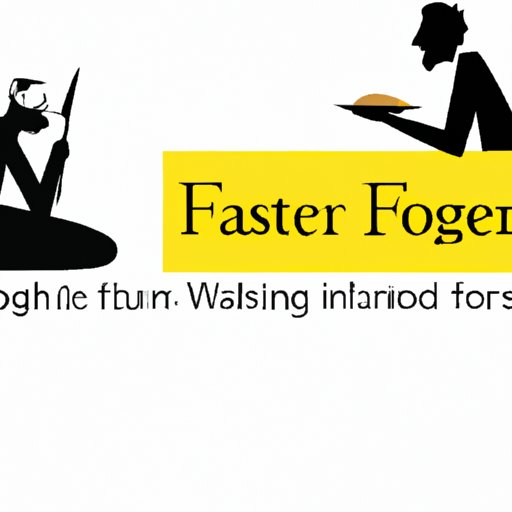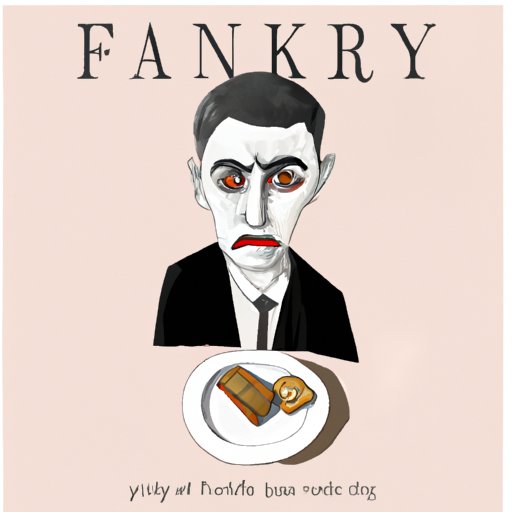Introduction
Franz Kafka’s short story “A Hunger Artist” is a powerful exploration of human nature and its relationship with art and society. The story follows a professional hunger artist who performs his craft in public for audiences, fasting for long periods of time without food. While the story is often interpreted as a commentary on the nature of modern life, there are many other layers to the narrative that can be explored through a hunger artist analysis.
Definition of Hunger Artist
The term “hunger artist” refers to an individual who voluntarily abstains from eating for extended periods of time. This practice has been documented throughout history, from ancient ascetics to modern-day performance artists. In Kafka’s story, the hunger artist is a professional performer who fasts in order to attract attention and admiration from the public.
Overview of the Story
In “A Hunger Artist,” the protagonist is a nameless figure who travels from town to town performing his craft. He is accompanied by a manager who oversees the performances and ensures that the audience members are satisfied with the results. During the course of the story, the hunger artist begins to feel increasingly isolated from those around him, leading to a profound sense of loneliness and despair. At the end of the story, the hunger artist dies alone in his cage, forgotten by the world.
Analyzing the Hunger Artist as a Reflection of Society
Kafka’s story can be read as a reflection of the state of modern society. Through the character of the hunger artist, Kafka examines themes of loneliness and alienation, as well as the role of art in contemporary life. By exploring these themes, Kafka suggests that the pursuit of fame and recognition can lead to feelings of isolation and emptiness.
Exploring Themes of Loneliness and Despair
The hunger artist’s story is one of increasing loneliness and despair. Despite his success as a performer, he feels increasingly alienated from those around him. This is especially evident when the hunger artist reflects on his career: “Nobody wanted to understand him…No one really believed in his fasting anymore, but no one had the heart to put a stop to it either.” Here, Kafka suggests that the hunger artist’s inability to connect with others has led to a sense of emptiness and disconnection.

Examining the Role of Art in the Hunger Artist
Kafka also uses the story to examine the role of art in modern life. Throughout the story, the hunger artist’s performances are described as “artistic endeavors”, suggesting that the act of fasting is itself an artistic expression. By linking the hunger artist’s performances to art, Kafka implies that art can be used to explore the depths of human experience, even in the most extreme circumstances.
Investigating the Hunger Artist’s Motivations
In order to gain a better understanding of the hunger artist, it is important to investigate his motivations for fasting. By looking at the character’s background and the events of the story, it becomes clear that the hunger artist is driven by a desire for recognition and admiration from the public. This is evident in the way the hunger artist is described by the narrator: “He wanted to be admired by everyone, and yet he remained unknown.”

Contrasting the Hunger Artist with Other Fasting Figures in Literature
The hunger artist’s motivations can also be compared to other figures in literature who have engaged in fasting. For example, in the Bible, Jesus fasted for forty days in the desert in order to prove his devotion to God. By contrast, the hunger artist’s fasting is not motivated by faith, but rather by a desire for fame and recognition. This suggests that, while fasting may be seen as a spiritual or religious act, it can also be used as a tool for gaining attention and admiration.
Examining the Hunger Artist’s Reasons for Fasting
The reasons behind the hunger artist’s fasting also provide insight into his character. As the story progresses, it becomes clear that the hunger artist is driven by a need for validation, as evidenced by his refusal to break his fast despite being offered food. This suggests that, for the hunger artist, fasting is a way of seeking approval and attention from the public. In this way, the hunger artist’s actions become a metaphor for the human need for acceptance and recognition.

Applying the Hunger Artist to Modern Social Issues
Kafka’s story can also be applied to modern social issues. By examining the themes of loneliness and despair, as well as the hunger artist’s motivations, it is possible to draw connections between the story and current problems such as global poverty and inequality.

Investigating the Impact of Global Poverty
The hunger artist’s story can be seen as a metaphor for the effects of global poverty. Like the hunger artist, those living in poverty often feel isolated and disconnected from the rest of the world. This sense of alienation can lead to feelings of desperation and hopelessness, which can be seen as a reflection of the hunger artist’s plight.
Examining the Relationship between Art and Social Change
The story also explores the relationship between art and social change. By connecting the hunger artist’s performances to art, Kafka suggests that art can be used to spark conversations about difficult topics such as poverty and inequality. This implies that art can be a powerful tool for encouraging social awareness and activism.
Conclusion
In conclusion, Franz Kafka’s short story “A Hunger Artist” provides a thought-provoking exploration of human nature and its relationship with art and society. Through a hunger artist analysis, it is possible to gain a deeper understanding of the themes of loneliness and despair, as well as the motivations of the hunger artist. Furthermore, the story can be applied to modern social issues such as global poverty, suggesting that art can be used to spark conversations about difficult topics.
(Note: Is this article not meeting your expectations? Do you have knowledge or insights to share? Unlock new opportunities and expand your reach by joining our authors team. Click Registration to join us and share your expertise with our readers.)
